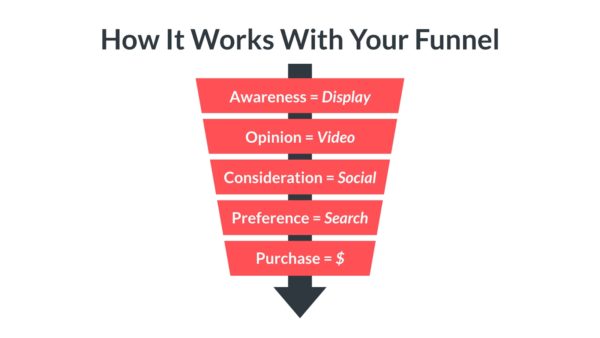Website visitors are ignoring your irrelevant ads.
Increasingly. 86% are already banner blind. Have been for years.
And they’re getting proactive about sidelining your ads. Ad blocking technology adoption has risen four times. That means almost half of consumers are using it in one form or another, costing publishers $22 billion in a single year.
When less and less is getting through, more and more isn’t the answer. Better and better is.
Here’s why, and how, AdWords IF Functions can help you customize ads to cut through the noise.
What Are Google AdWords IF Functions?
AdWords IF Functions were recently unveiled globally. They allow you to personalize ad text based on who might be reading it. You then can also specify ‘backup’ text to show as default if your conditions aren’t met.
That seems small. Minor even. But in a world where consumers are increasingly ignoring irrelevant ads, IF functions promise to help you recapture that lovin’ feelin’.
One easy example is mobile. Website conversions hover around ~3% according to BigCommerce (if you’re lucky, right?!), whereas phone conversions range between 30-50% according to Invoca. And guess where those phone calls are coming from? 45% are coming from mobile search.
You can target mobile users with an IF Function then create specific promotions just for them. According to Samantha Drane of CPC Strategy:
“The way we use our mobile device is different than the way we search on desktop. Mobile is more ‘in the moment’ – maybe you’re going somewhere or looking for something near you but desktop is considered more of a research tool.”

This new Search Network-only option can be used to customize the headline and descriptions areas. (No web addresses. Yet.)
And you can simply write in IF options directly using parameters. Here’s how that works.
How Do IF Functions Work?
Show of hands: How many programmers or Excel geeks are reading this?
You already know who you are. And you’re already well versed in IF functions. It’s the language of your trade.
For everyone else, IF Functions are an either/or. They allow you to pre-program responses based on IF an answer is value A or value B.
For example, let’s say you want to run a few simple advertising scenarios to see if you’re going to get your money back from a new ad campaign. You have to spend so much money in ads up front to generate revenue in return. And ideally, the advertising costs shouldn’t eat away all of the revenue generated (so you’ve got profits left over for overhead, new iMacs, happy hours, etc.).
Simple, right?
You want to see what that break-even Cost of Customer Acquisition looks like (as a percentage of each sale). Let’s say you need at least 50% to break even and turn a profit.
Here’s what that looks like:

At the very bottom, you’ll see a “No” or a “Yes.” That’s telling you, the advertiser, which scenario will work or not.
And it’s a simple IF Function. Here’s the formula:
=if(CAC%>50%,”No”,”Yes”)
What you’re saying is:
- If the Cost of Customer Acquisition is greater than 50%, then
- True = No (Because it would be too expensive on a per sale basis.)
- False = Yes (Because it would now be affordable.)
In other words, the IF Functions are written to provide different values for different ‘answers.’ And you can even specify a default value to show up. Just in case, as a backup plan.
Web fonts work this way. Let’s say your designer found a new, gorgeous sans-serif font for your redesign. For example, you have a client who wants their own custom font created (that actually happened once).
The problem is that brand-spanking-new custom font probably won’t come preinstalled on many other browsers or devices. Instead of some fugly Times New Roman popping up, though, your designer astutely creates a ‘fallback’ to Helvetica. That way, your site still looks good no matter what ancient device someone uses.
(Fun fact: There’s a rumor that Microsoft created the Arial font with the same proportions as Helvetica so they could use it as a replacement without paying for the license.)
AdWords IF Functions now work exactly the same.
Let’s revisit the mobile example. You want to customize the headline and description to show mobile visitors a great deal. Here’s how it would look:

And here’s what it means:
- {=IF starts
- (device=mobile, specifies the visitor attribute to look for
- “text to insert” is just that. The text you want to display to people who match that attribute.
- ): closes the attribute customizations
- “default text” also is that. The text you want to show up for all people who DON’T match the attribute.
- } closes the IF Function
And that’s pretty much it!
Well, the basics anyway. But we’re just scratching the surface. Here’s why IF Functions are important (and how to get the best bang for your buck).
How (and When) to Best Use IF Functions
Competition’s stiff. Ad costs aren’t falling. And the days of ‘one-and-done’ campaigns are declining.
Nearly half of consumers bounce from device to device or channel to channel before purchasing. That number jumps up the bigger the purchase (eConsultancy says to 63%). Almost a dozen ‘touches’ with a prospect are also required before purchasing. So you’ve got your work cut out for you.
Facebook and Salesforce, an unlikely duo if there ever was one, has found the road to salvation. They partnered with a large retailer to coordinate email and Facebook ad campaigns for 565,000 subscribers.
The results? According to their reported data, the combination of Facebook news feed ads “extend email campaign reach by 77%,” while the subscriber group that received both email + ad were “22% more likely to purchase.”
The point? Today’s ad campaigns can’t stop at a single promotion for a single visit use case (like the earlier mobile example). That approach is fine but won’t move the needle.
Johnathan Dane of KlientBoost elaborates:
“Most of our clients have found success with IF functions when combined with RLSA audiences. So most of the time, we just want to focus high intent actions people have taken that show they were close to converting, like being in the cart or going through towards the end of a lead form funnel.”
The power of IF Functions, then, isn’t in device targeting but audience targeting. Let’s unpack that statement.
Most visitors won’t convert on their first purchase. They’re not ready yet. They need more ‘touches.’ Remarketing lists for search ads (RLSA) can help you create new audiences based on what people do (or don’t do) on your website.
And that’s where the money is. CMO.com reports that “retargeted visitors are 70% more likely to convert compared to ones who aren’t.”
The trick is knowing who to target, with what offer, at what time.
An e-book might be fine for new visitors. Sequential retargeting will show them this ‘low threat,’ low-intent option first. The next retargeting ad will push them even lower down the funnel afterward.
Adding a product to a shopping cart qualifies as a “high-intent action,” as Johnathan called it. That’s because it’s closer to the conversion event, which is the exact moment when people are most likely to use search (just before they purchase). That’s helpfully depicted in the KlientBoost illustration below that Johnathan was kind enough to provide for context.

Now let’s take that back to IF Functions. Earlier we used the device attribute to customize ad text. However, using them to target “high-intent actions” is your best bet.
Case in point: Nearly 70% of shopping carts are abandoned. That’s depressing. Considering these people were at the moment of truth before bailing.
Let’s bump that sitewide 20% discount offer up to 30% for cart abandoners to sweeten the deal.
Combining IF Functions with RLSA audiences makes it easy. Simply swap out the default 20% text for the increased one for abandoners.

And this is just one small example.
81% of hotel bookings are similarly abandoned. They, too, should get a customized ad text in Google. (Because you know they’re bouncing from your website to Expedia to price match.)
IF Functions, by themselves, are a novelty. Instead, use IF Functions to customize ads for specific audiences.
A Final Caveat
IF Functions offer a lot of promise. They provide an option to better target ads to customers, which is critical in today’s banner-blind, ad-blocking world.
Yet Johnathan offered a final parting comment on them:
“But the actual mass appeal of IF functions still lack, since most of the time we’ve found that people don’t even pay attention to the ad, it’s the landing page or website impression that matters most if we get that click.”
IF Functions are interesting. But they’re still only an incremental change.
Experiment with them. Combine with retargeting audiences.
But don’t neglect the other on-site components that ultimately persuade people to convert.
Image Credits
Featured Image: StockSnap/Pixabay.com
In-post Photo: Google.com
In-post Graphic: KlientBoost.com
Screenshots by Brad Smith. March 2017





